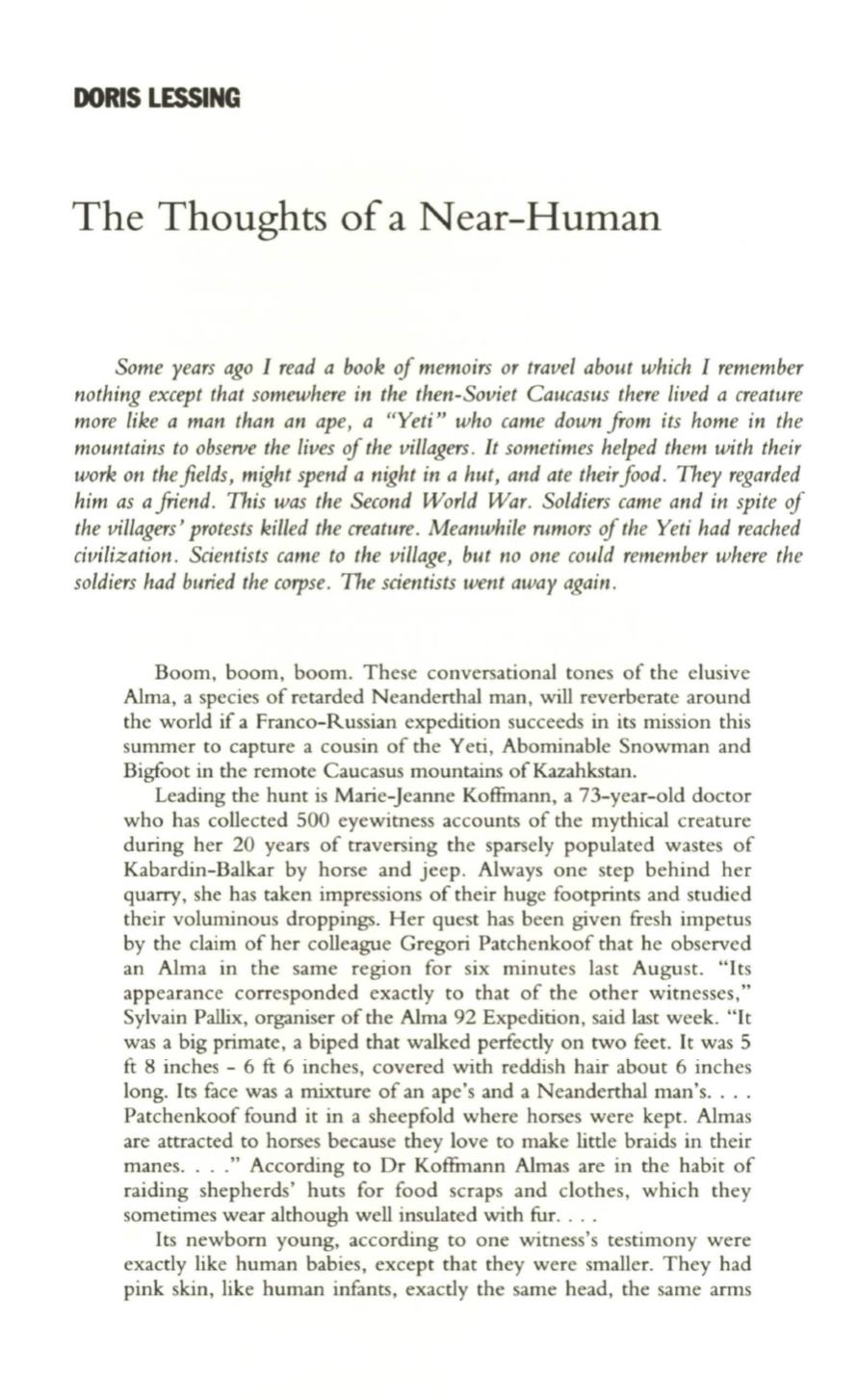
DORIS LESSING
The Thoughts
of a
N ear-Human
Some years ago I read a book of memoirs or travel about which I remember
nothing except that somewhere in the then-Soviet Caucasus there lived a creature
more like a man than an ape, a "Yeti" who came down from its home in the
mountains to observe the lives of the villagers. It sometimes helped them with their
work on thefields, might spend a night in a hut, and ate their food. They regarded
him as a friend. This was the Second World War. Soldiers came and in spite of
the villagers' protests killed the creature. Meanwhile rumors of the Yeti had reached
civilization. Scientists came to the village, but no one could remember where the
soldiers had buried the corpse. The scientists went away again.
Boom, boom, boom. These conversational tones of the elusive
Alma, a species of retarded Neanderthal man,
will
reverberate around
the world if a Franco-Russian expedition succeeds in its mission this
summer to capture a cousin of the Yeti, Abominable Snowman and
Bigfoot in the remote Caucasus mountains of Kazahkstan.
Leading the hunt is Marie-Jeanne Koffinann, a 73-year-old doctor
who has collected 500 eyewitness accounts of the mythical creature
during her 20 years of traversing the sparsely populated wastes of
Kabardin-Balkar by horse and jeep. Always one step behind her
quarry, she has taken impressions of their huge footprints and studied
their voluminous droppings. Her quest has been given fresh impetus
by the claim of her colleague Gregori Patchenkoof that he observed
an Alma in the same region for six minutes last August. "Its
appearance corresponded exactly to that of the other witnesses,"
Sylvain Pallix, organiser of the Alma 92 Expedition, said last week.
"It
was a big primate, a biped that walked perfectly on two feet. It was 5
ft 8 inches - 6 ft 6 inches, covered with reddish hair about 6 inches
long. Its face was a mixture of an ape's and a Neanderthal man's.. ..
Patchenkoof found it in a sheepfold where horses were kept. Almas
are attracted to horses because they love to make little braids in their
manes...." According to Dr Koffmann Almas are in the habit of
raiding shepherds' huts for food scraps and clothes, which they
sometimes wear although well insulated with fur. ...
Its newborn young, according to one witness's testimony were
exactly like human babies, except that they were smaller. They had
pink skin, like human infants, exactly the same head, the same arms


